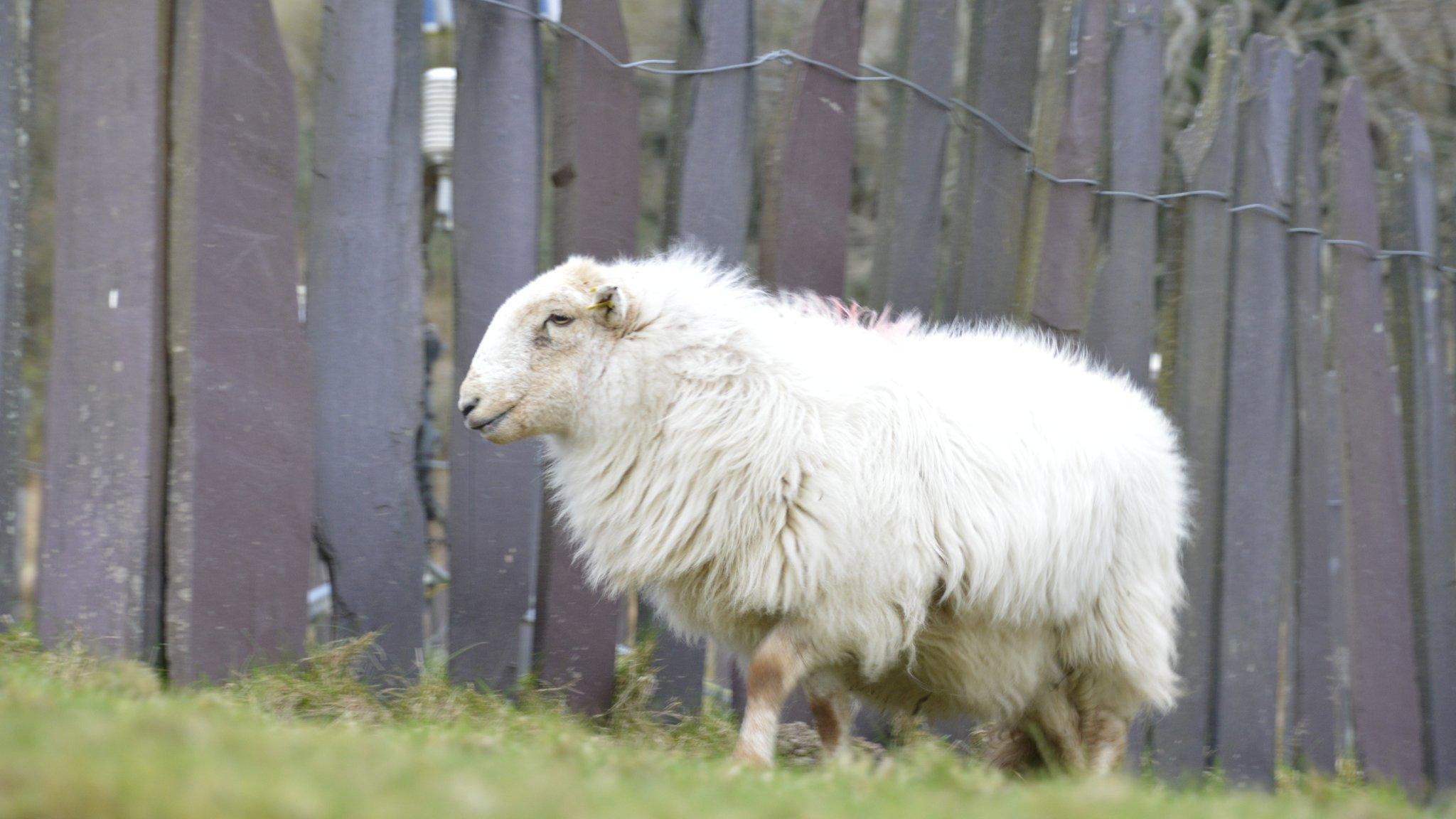Fitness trackers used to monitor Wales sheep pregnancies
- Published
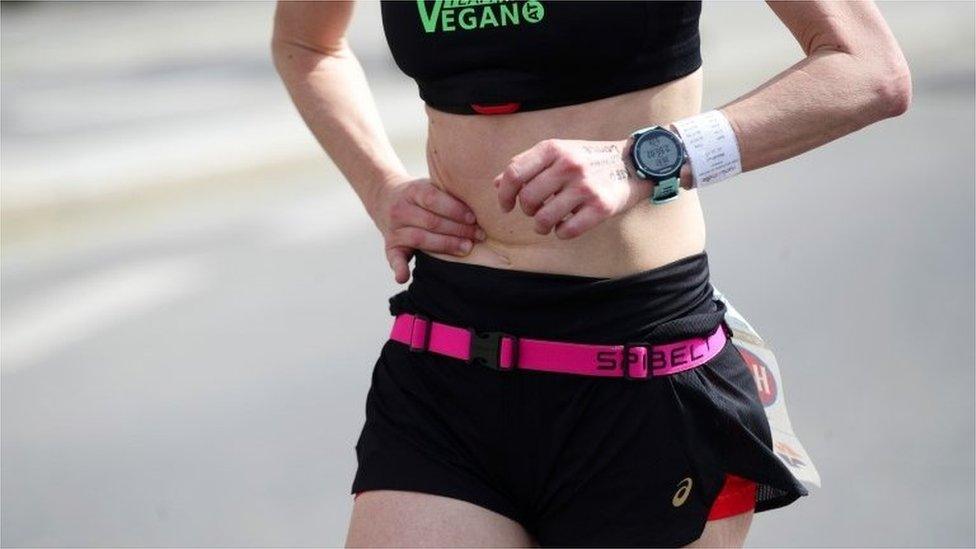
Fitness trackers are usually sported by people, rather than sheep
Fitness trackers have grown in popularity, but they are usually used to monitor people's activity and exercise, rather than sheep's.
But research from Aberystwyth academics has shown they can be used to predict when sheep will give birth.
It found the length of time pregnant ewes spend lying down is associated with the number of expected lambs, their birth weight and sex.
It can also help identify when there might be a problem, scientists said.
The findings have been published in the journal Applied Animal Behaviour Science, external.
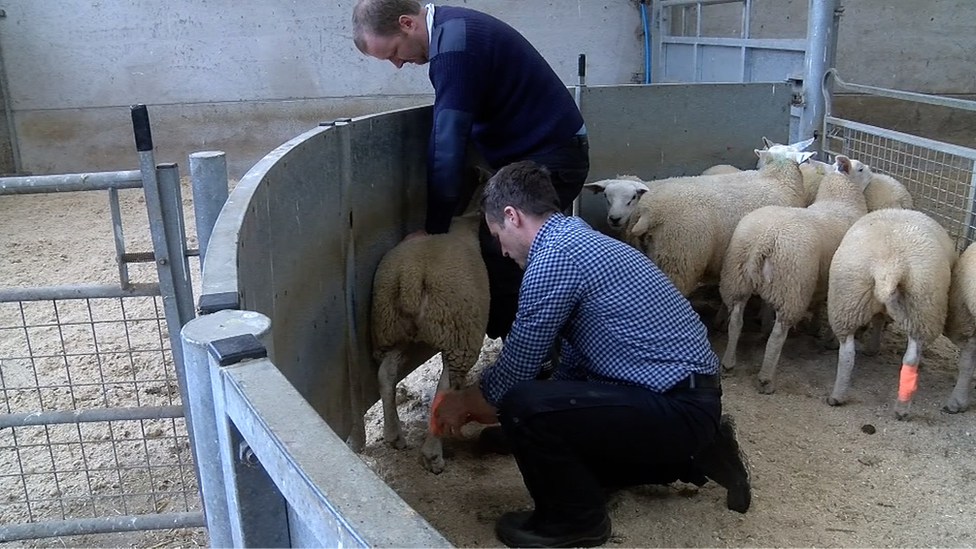
Researchers hope the trackers will give them a better understanding of what 'normal ' lambing is for ewes
Dr Manod Williams, who led the Aberystwyth University research at Gogerddan Farm in the town and Llysfasi in Ruthin, Denbighshire, said the accelerometers fitted to the legs of the sheep would help farmers better understand what was normal for the animals.
"There is a lack of understanding about the factors affecting the lying behaviour of sheep," she said.
"We need to better understand how much they should lie down per day, what constitutes normal, and which physiological states affect them.
"Lambing represents an important period in the production cycle for ensuring ewe comfort and welfare, but relatively little is known about the behaviour of pregnant sheep."
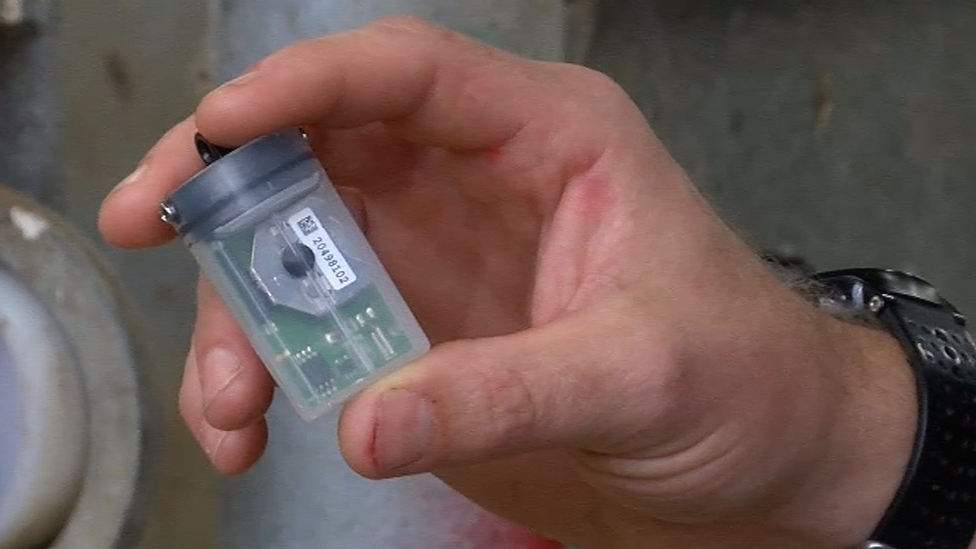
The devices can feed back real-time movement information to monitor pregnant ewes
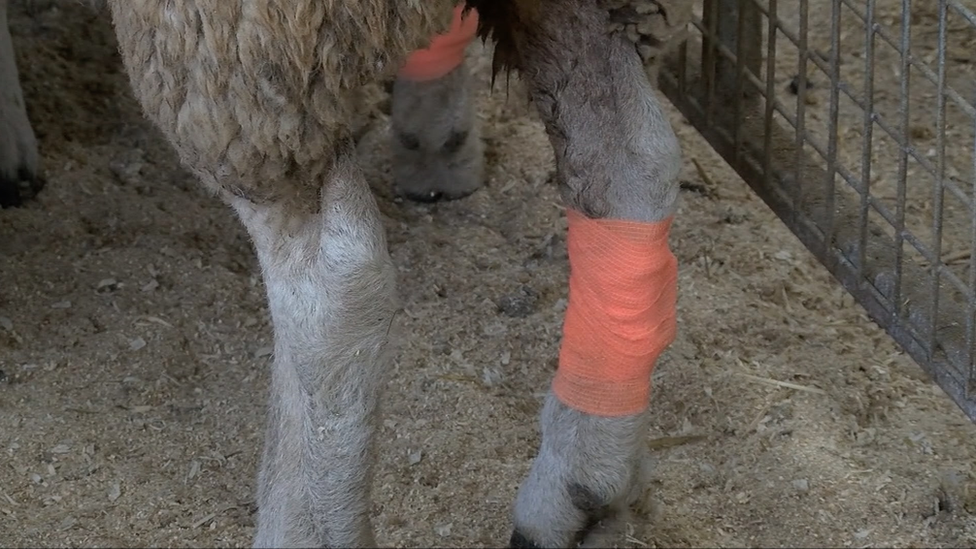
The devices are lightweight, and easily fitted using bandages
The average gestation period for a sheep is 147 days but it can vary from 138 to 159 days. Farmers normally calculate the time when lambing is due from conception.
Ewes that lamb indoors and were carrying a single male lamb laid down for an hour less each day than those expecting female lambs.
For ewes expecting twins indoors, the researchers found increases in the combined birth weight of the lambs meant less lying down.
The lamb's sex did not affect the lying behaviour of sheep in the outdoor-lambing flock, but the birth weight of twins affected duration and frequency.
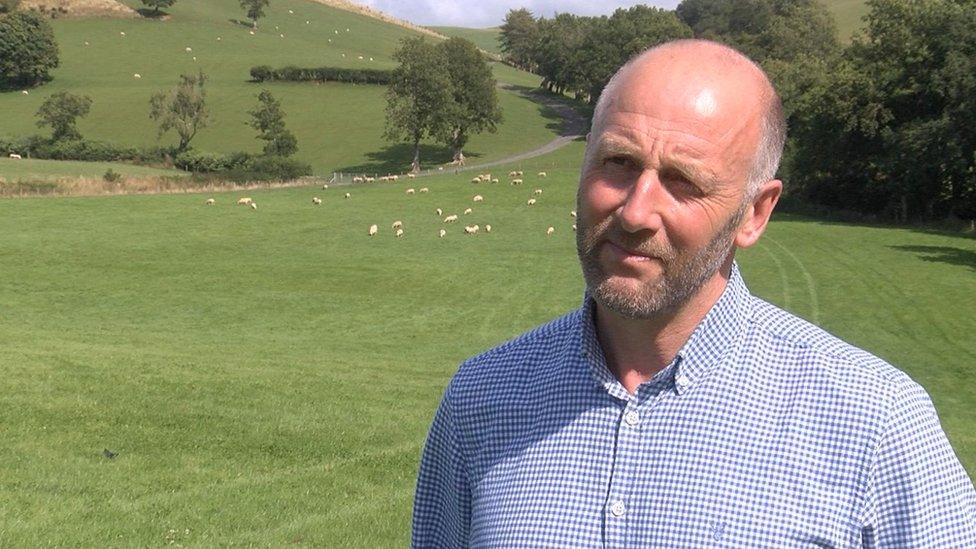
Dafydd Jones monitors his sheep via CCTV
Dafydd Jones, who farms near Machynlleth in Powys, put CCTV in one of his sheds to observe the behaviour of his flock during lambing.
"By observing the animals when they don't know actually that you're looking at them, you can see an ewe that's going to lamb in the next few hours - she's getting up, she's turning around, she's getting back down again.
"And if that period is a bit longer, you know there's a bit of a problem so it's a good thing that you know about animal behaviour."
- Published1 January 2021
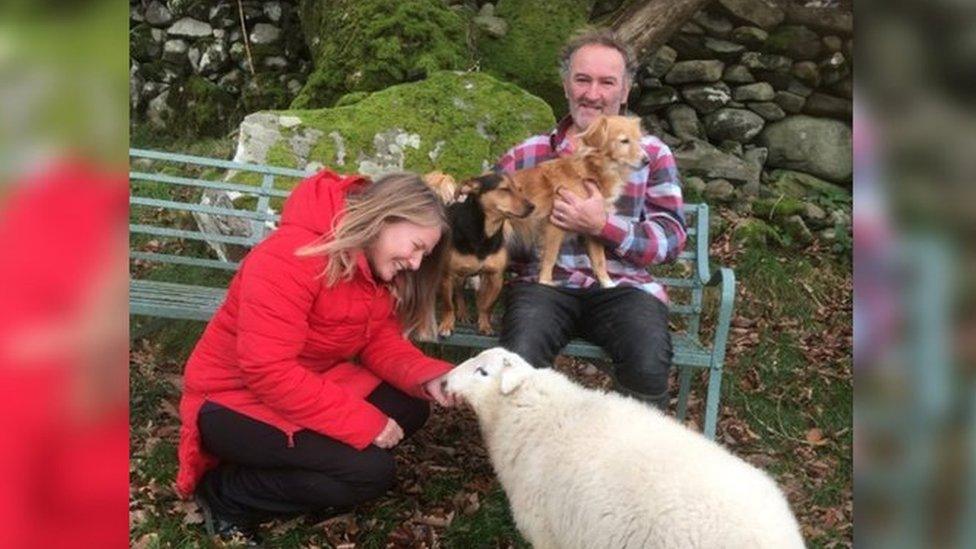
- Published10 March 2021
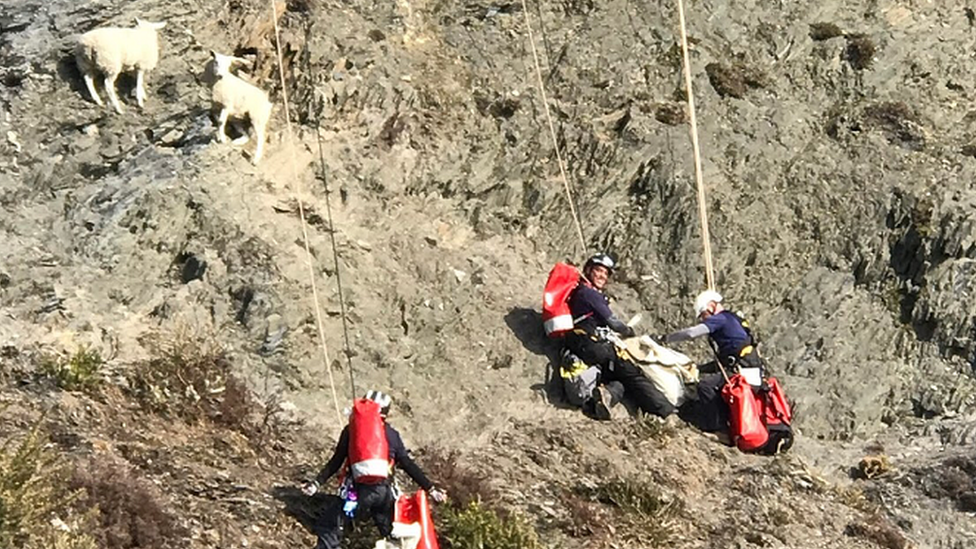
- Published13 September 2020
